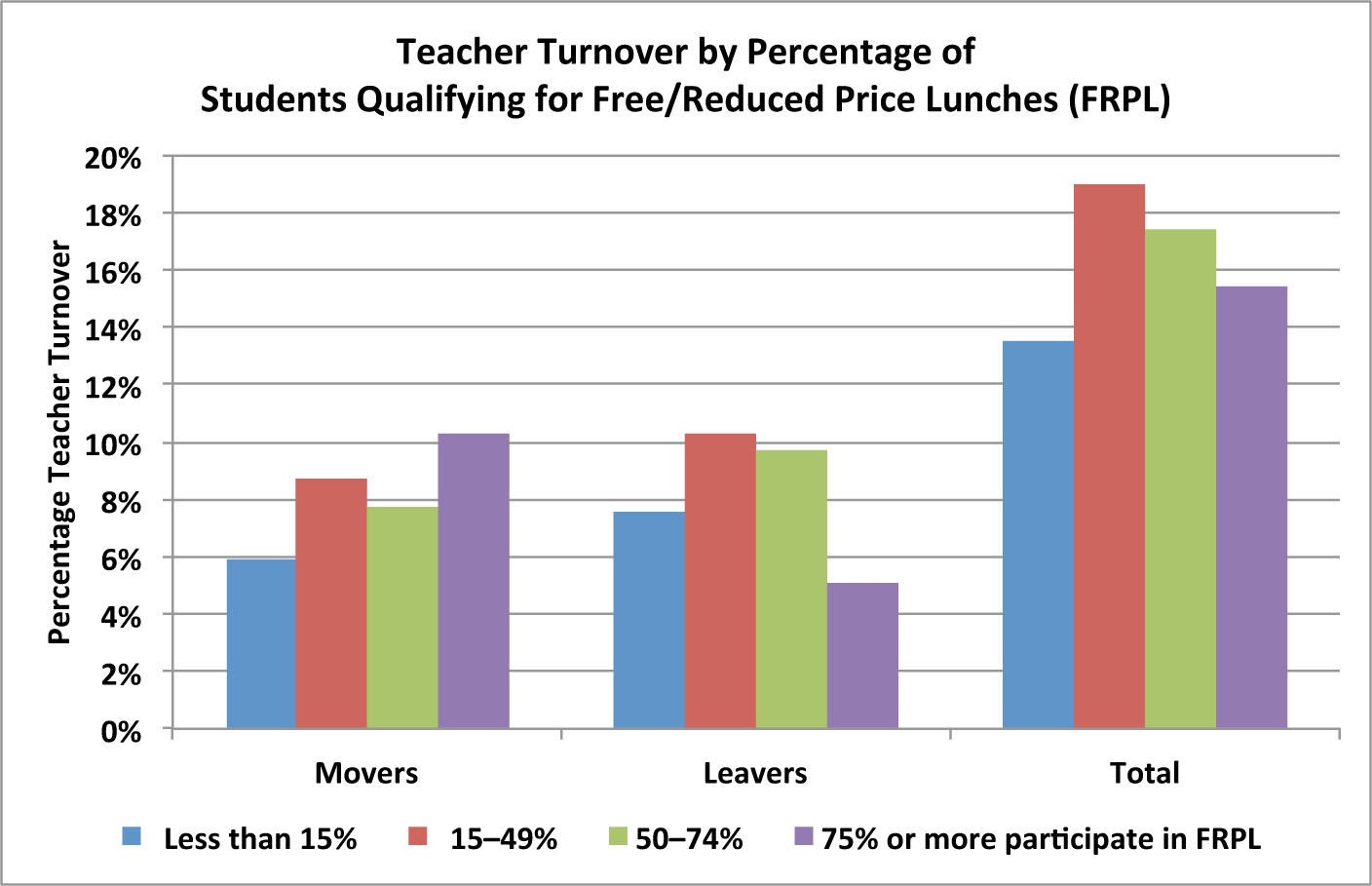How Do Teacher Turnover Rates Differ Among Schools With Different Socio-Economic Conditions?
Why is this question important? Teacher turnover is an enormous cost for education systems, both in terms of student outcomes and dollars. High turnover results in an increased number of inexperienced teachers, a loss of trained teachers, and a cost in dollars for recruitment, hiring, and training new teachers. Teacher turnover is disproportionately high in certain demographic areas. It is critical to understand where it is highest, and to conduct additional research to understand why.
See further discussion below.

Source(s): Teacher Attrition and Mobility: Results From the 2008-09 Teacher Follow-Up Survey
Result(s): The data paints a mixed picture of the relationship between teacher turnover and FRPL. The percentage of teachers changing schools (movers) does increase as the socio-economic status (FRPL) of the students worsens. The percentage of teachers leaving the profession is higher in the 15-74% range of students qualifying for FRPL. It drops significantly with schools who have the worst socio-economic status.
Implication(s): Efforts at improving teacher retention have not been successful overall, and this failure represents a major obstacle to long-term school improvement. This data suggests that the problem is even worse for the schools who can least afford it, those that have students representing low socio-economic status.
Author(s): Keigher, A., Cross, F.
Publisher(s): Institute of Education Sciences, National Center for Educational Statistics
Study Description: In the mid-1980s, the National Center for Education Statistics (NCES) conducted a number of surveys concerning schools and school personnel. In 1985, NCES undertook a critical review of its elementary and secondary school data system, identifying gaps in content and design. As a result of this review, NCES redesigned the SASS survey system to emphasize teacher demand and shortage, teacher and administrator characteristics, school programs, and general conditions in schools. SASS also collects data on many other topics, including principals' and teachers' perceptions of school climate and problems in their schools; teacher compensation; district hiring practices and basic characteristics of the student population. In 1999 to 2000, public charter schools were also included in the sample. For the 2003 to 2004 SASS, public charter schools were included in the sample as part of the public school questionnaire. http://nces.ed.gov/Surveys/SASS/index.asp
Definition(s): Stayers: Teachers who were teaching in the same school in the current school year as in the base year.
Movers: Teachers who were still teaching in the current school year but had moved to a different school after the base year.
Leavers: Teachers who left the teaching profession after the base year.
Citation: Keigher, A. (2010). Teacher Attrition and Mobility: Results From the 2008-09 Teacher Follow-up Survey (NCES 2010-353). U.S. Department of Education. Washington, DC: National Center for Education Statistics. Retrieved 10/1/2009 from http://nces.ed.gov/pubsearch.
